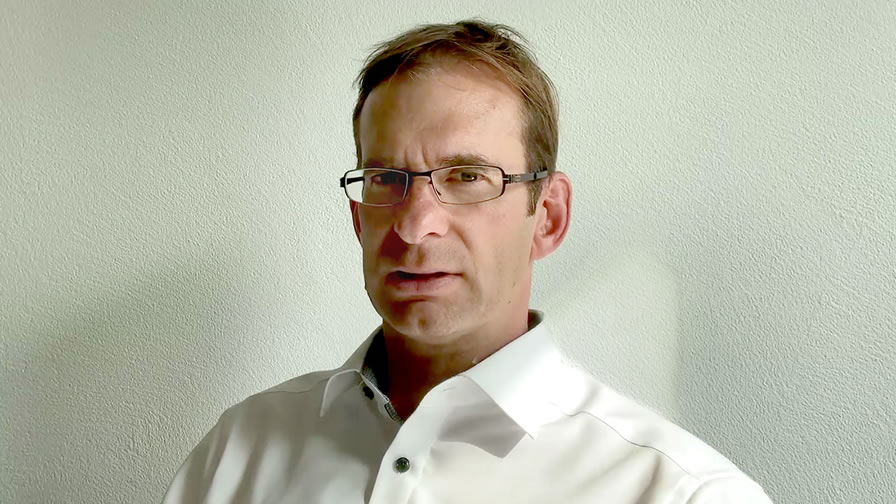Family offices, entrepreneurs and high net worth individuals are currently looking more closely at commodities as an investment. Markus Hill spoke on behalf of FONDSBOUTIQUEN.DE with Urs Marti, Partner at SIA Funds AG, about the assessment of the market cycle in this real asset segment and about the investment behaviour of various investor groups in the market. Additional topics in the discussion were the connections between value investing and investment in commodities as well as the current importance of sports and Hugo Stinnes (“Industrialist & Politician”).
Hill: How long have you been dealing with the topic of raw materials? What fascinates you about this topic?
Marti: I still come from a time when the future career aspiration was a crane operator. We still played with railways, remote-controlled planes and the village king was the one with the best-cut-up moped. A certain fascination for technology, big ships, trucks, buildings was probably always with me. In general, one seems to have hardly any idea what it all needs until we have a kilo of gold, a filled tank or enough electricity “real” and can use it. In the financial world, I was taught that one should act as anti-cyclically as possible and buy undervalued assets to be able to earn something on the stock market. During the Internet bubble, the commodity industry was the antipode. As a portfolio manager, I later started to invest in hydroelectric power plants, mines, and oil producers.
Hill: Which commodities do you pursue more intensively? How do you form an opinion about the market?
Marti: We follow the sectors of capital investments. Commodities have about 10-year cycles. They are supply cycles, which means long pig cycles. In the last ten years, there has been far too little investment in many sectors due to low prices. The availability of many commodities will decline.

Hill: You are a portfolio manager and have many conversations with fund selectors and institutional investors. Do you have the impression of these discussions that the importance of commodities in asset allocation is correctly assessed by your discussion partners?
Marti: I have this impression from many of my contacts. There are some specialists with whom I exchange views. Besides, there is often interesting feedback at investor presentations, in one-on-one meetings, or at events. It is probably the most neglected sector. This is always the case when something is at its lowest point, similar to the situation twenty years ago. One thing that struck me in this context: Family offices, entrepreneurs, and many wealthy private investors appear to be more open-minded and interested in commodities. There can be various explanations for this. One hypothesis could be that this group of investors is more interested in real assets (“real economy versus financial economy”) when building up their assets. Moreover, there is a completely different, important aspect of investment behaviour in this segment. Entrepreneurs, private investors, and also family offices generally have very short decision-making paths. Personal responsibility, “skin-in-the-game” and the ownership approach are the most prominent features when selecting investments. Among institutional investors, we still perceive a certain reticence towards commodities. One reason for this could simply be the structures; decisions are often made in committees, and due diligence processes seem more time-consuming. Both approaches have their justification, you simply have to be prepared for them.
Hill: Value investing and investing in commodities, is there a connection between these topics?
Marti: A good question. Surprisingly, the periods correlate because value outperforms with rising commodity prices. At first glance, there doesn’t seem to be a connection between these two themes. In times of sharply falling interest rates, growth versus value is often outperforming. This is because the discount rates for cash flows decrease. The further into the future the cash flows are, the more their net present value increases. (Often the positive cash flows are infinitely far in the future). Commodities are probably the antipode. One has depletion, the industry loses about three percent of production annually without investment. If you don’t invest, after 20 to 30 years there is hardly anything left to produce. You can’t extrapolate an infinite growth or scale an existing platform. It is “real life”. You have to invest huge amounts of money – it’s difficult, Mother Earth is capricious. But that’s why prices go up and there are very good cash flows, dividends, and low valuations. The commodity sector has never been valued so low in its history.
Hill: Commodities and portfolio management are your professions, your passion. What other topics are you currently working on? Which book are you currently reading?
Marti: In my free time I like to ski and cycle. I am quite shocked by the rest of society and politics. It seems that you successfully turn everybody against everybody. Right versus left, old versus young, black versus white, east versus west, poor versus rich, south versus north, city versus country, and so on. This is unlikely to improve as the distribution struggles intensify. Politicians often see the citizens and the economy as nothing more than a “cash cow”, admittedly in somewhat polemical terms. The whole thing has long since ceased to be financially viable and now functions only through the money press. Currently, I am reading the biography of the German industrialist Hugo Stinnes (1870 – 1924). Why do I find his life story interesting? Looking back, it is always interesting to see how topics such as central bank policy, inflation, and real assets have developed an interesting economic dynamic in the past. Of course, the comparison with the current situation of the markets limps in partial aspects, but fundamental similarities can be discovered if you look a little closer.
Hill: Thank you very much for the interview.
FONDSBOUTIQUEN, VALUE INVESTING & ROHSTOFFE (SIA Funds AG)
Photo: www.pixabay.com

3 thoughts on “FUND BOUTIQUES & PRIVATE LABEL FUNDS: Commodities, Value Investing, Family Offices and Hugo Stinnes (Interview – Urs Marti, SIA Funds)”